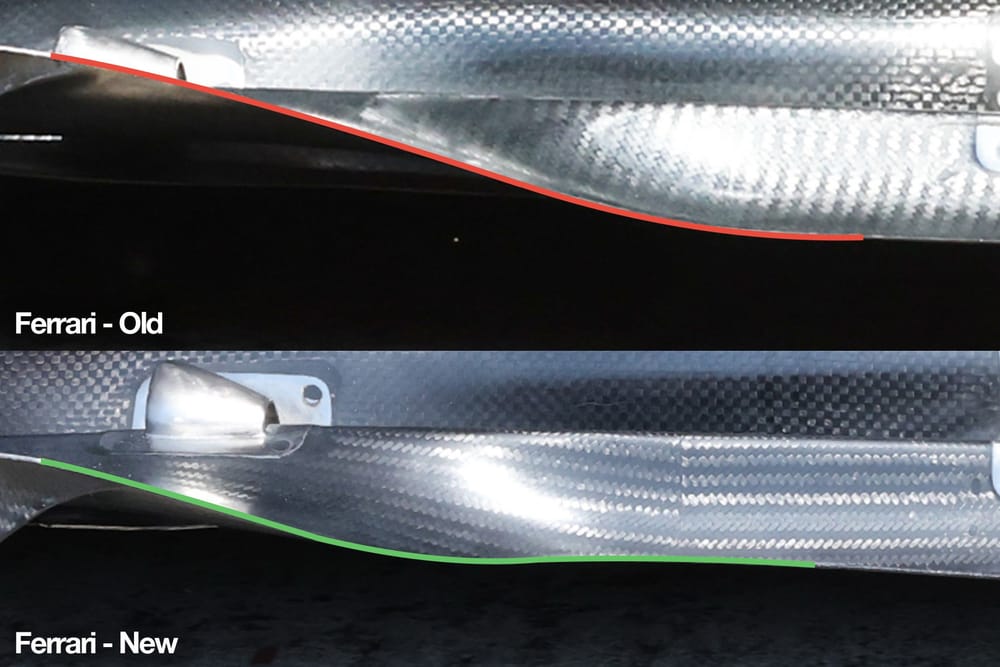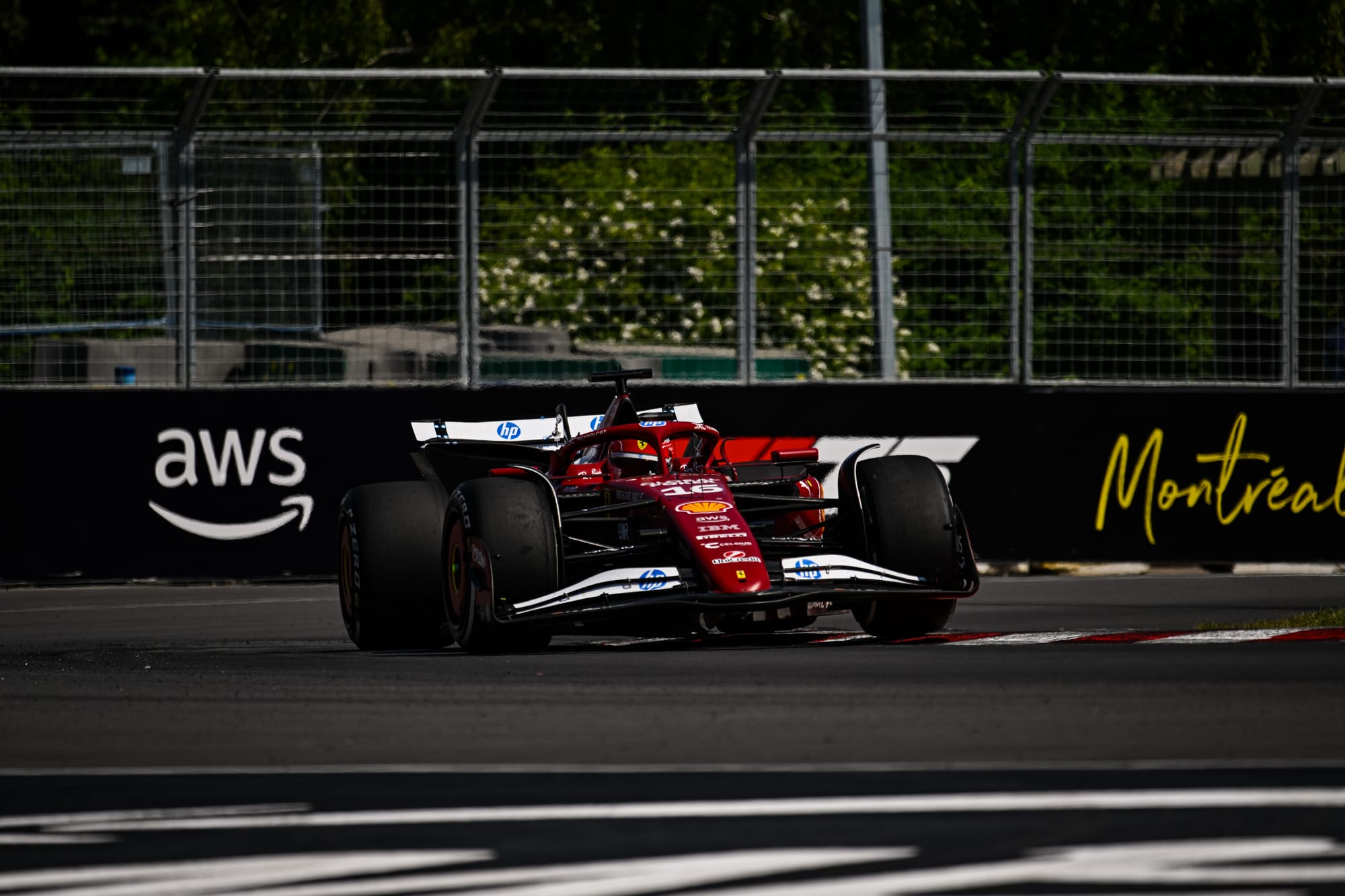Ferrari has brought a few floor updates to Formula 1's Austrian Grand Prix aimed at addressing some key challenges it has faced this season.
Its main problem throughout 2025 has been in being able to run the car low enough to the ground to generate the downforce required.
That is because the underfloor plank hitting the ground at high speed becomes a physical limit that defines the ride height. Then, when the car slows down, and the downforce reduces, the car rises up.
This is the area it has been working on, aiming to increase downforce at higher ride heights, which in reality means at low speed.
In Monaco its issues were not as much of a handicap, as everyone else suffers the same problem of having to run the car higher anyway because of the bumpy circuit.
However, at other tracks where rivals can run lower, Ferrari loses grip compared to the opposition as it cannot run as low as it would like.
As previously reported by The Race, in a bid to try to overcome some of its problems, it has had to adopt some lift and coast tactics at the end of straights at previous races.
This obviously delivered benefits in terms of saving fuel and engine and brake cooling, but the main motivation was to prevent increasing speed over the final 100 metres or so of a straight to avoid any extra downforce pushing the car down and making the plank hit the ground on the approach to the braking area.
Ferrari's Red Bull Ring modifications are all about increasing underfloor downforce. If it can manage to achieve that, then it will be able to run the car that little bit higher and still develop a decent amount of extra grip at higher ride heights.
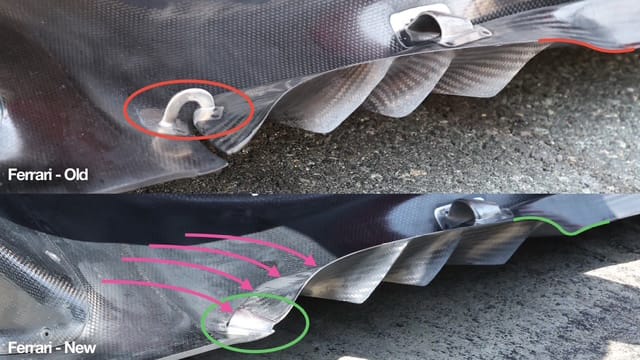
Ferrari has removed a hanger (highlighted with the red ellipse) at the front of this outer floor area. To support this wing it has added an end mounting (highlighted with the green ellipse below).
This allows more flow (which has been highlighted with the magenta arrows) through the actual slot gap, allowing the side wing to work harder at higher ride heights.
The detail of how this raised section (highlighted with the red edging) transitions to the lower section further rearward (highlighted with the green edging) has also been altered.
The new profile change (highlighted with the green edging) will improve the flow definition of how the low pressure from scavenging this front corner of the floor dissipates further rearward when the floor edge sealing is the prime mover.
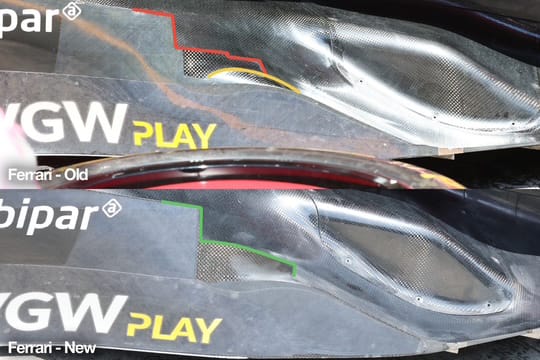
Ferrari has also altered the flow distribution and profile of the underfloor leading edge splitters. We can't see them, but this small bulge (highlighted in yellow) is part of the updates too.
These internal splitters are critical to the flow distribution of the underfloor leading edge. If you are able to scavenge more out from that front corner then the diffuser will work harder at higher ride heights.
A small change on the upper surface floor fin (highlighted with the red edge line on the old floor and with a green edge line on the new floor) will generate a more robust vortex, which will also help with the front floor corner scavenging effect.
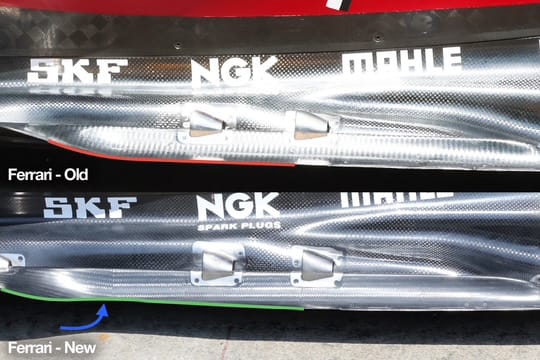
This view shows that this floor side wing is more or less the full length of the floor side, and it also has a slot gap along its full length.
The front section, which is just out of this picture, is shown above. This area is responsible for scavenging this forward section. It is acting like a small diffuser and this slot gap allows it to work harder when the car is closer to the ground.
The rear section is responsible for sealing the rear side of the floor, improving the performance of the diffuser. You can see the small detail change from a straight to a curved outer edge (highlighted with the blue arrow).
The slot gap in this section reduces the on/off effect when the floor side gets closer to the ground. If you don’t have this, it can very quickly lead to porpoising. In effect, the slot gap means the underfloor works more consistently.
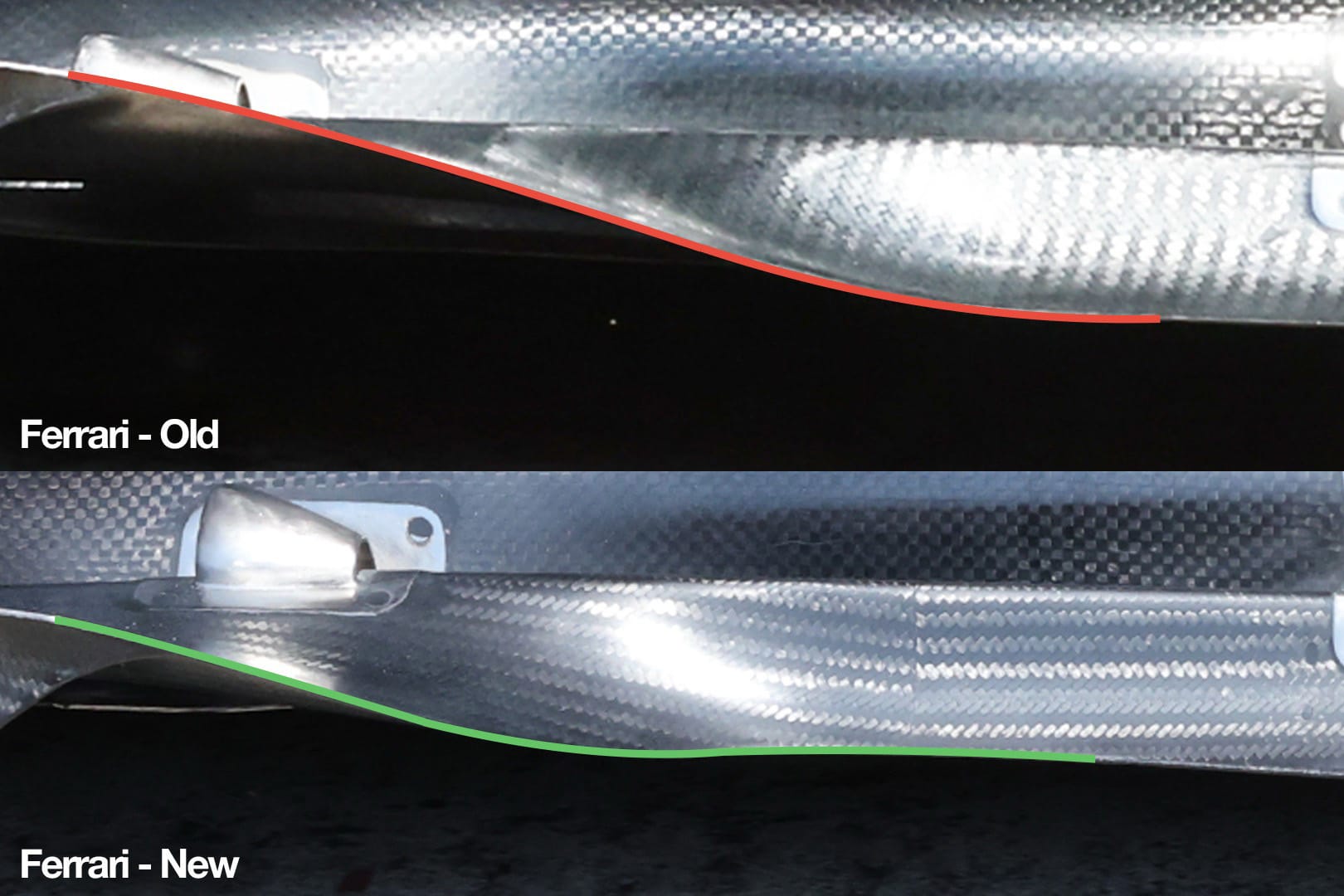
This is just a closer up shot of the altered transition between the front floor edge scavenging system and the rear floor edge sealing system.
Ferrari also has a new diffuser. The maximum exit area of the diffuser is defined in the regulations, so the modifications will be to the expansion rate from the throat area of the floor through to the diffuser exit area.
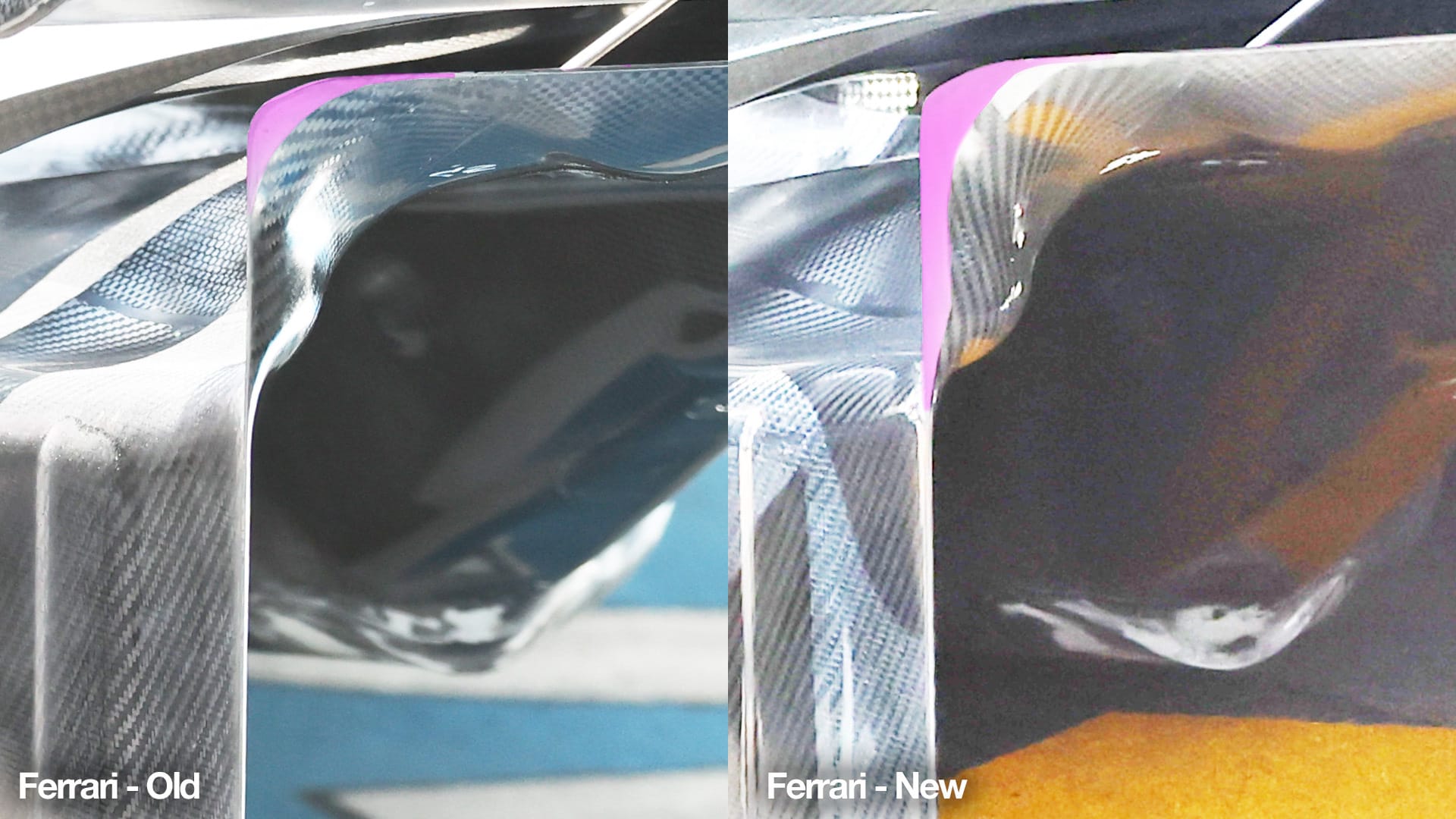
Maximising this expansion - especially at the rear tyre area, which increases overall blockage - and what is called the underfloor 'boat section', which shrouds the gearbox and then opens up into the diffuser, is critical to flow stability. Expand it too slowly and you lose performance, expand it too quickly and you suffer from instability.
Overall, as long as Ferrari doesn't get tempted to run the car too low to increase downforce levels, then I think these modifications should be a step forward. The question is just how big a step it is.


